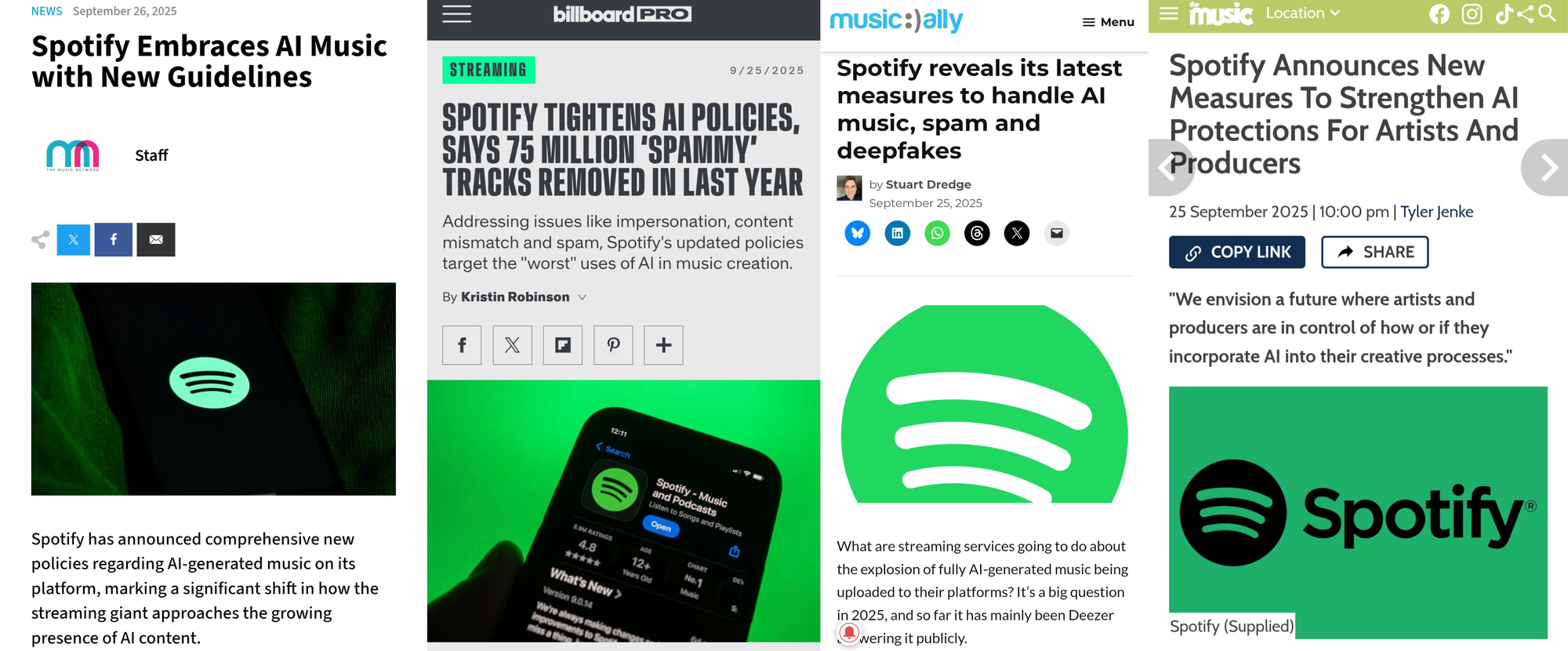We're back!
After a short break (yes, we missed you too), SWOT by Sound Story returns — your inside track on the strengths, weaknesses, opportunities, and threats shaping the Australian creative industries.
But first: AusMusic Month has just begun, which also means that AusMusic T-Shirt Day is now fast approaching (Nov 27). Sound Story is proud to be working on the campaign this year for Support Act.
If you're not subscribed: You can join SWOT here.
Sound Story Download:
⚡ Trending: The $4.1 million question: How did the BOM get its new website so wrong? Words by David Swan. Source: Sydney Morning Herald
🎵 Music: How Ed Sheeran and Oasis are giving Aussie musicians a go. Words by Kathy McCabe. Source: Herald Sun.
📰 Media: Commercial radio backs AusMusic T-Shirt Day for the first time. Words by Natasha Lee. Source: Mediaweek.
📣 Comms: Roxy Jacenko’s hot takes on the ‘lazy’ PR industry are very lazy. Words by Sally Branson. Source: Mumbrella
📜 Government: Federal government rules out changing copyright law to give AI companies free rein. Words by Maani Truu. Source: ABC
💰 Advertising: Aussie furniture brand Eva takes a cheeky swipe at Westpac in timely mobile billboard campaign. Words by Ricki Green. Source: Campaign Brief
📲 Tech: Freeze accounts, dob in under 16s: Big tech plans for social media ban. Words by Tess Bennett. Source: Australian Financial Review
👠 Fashion: The PM wore his fave band tee at the airport and the opposition didn’t like it. Words by Mary Varvaris: themusic.com.au
🧠 Leadership: Junkee co-founder slams Australian publishing for lack of ambition. Words by Hal Crawford. Mumbrella
🌶️ Spicy: ‘Why is this on TV’: Channel 9’s ‘Selling Sex’ doco angers Aussies. Words by Rebekah Scanlan Source: news.com.au
This Week: The Tools Are Smarter — The Rules Still Aren’t (Yet)
Generative AI has shifted from a fringe experiment to a mainstream tool. About 115 to 180 million people each day are now spitting out song stems, logos, copy, and campaign concepts at the click of a button.
For brands and creative teams, it’s no longer a question of if AI will play a role, but how. The stakes are high. Ignore the tech and risk inefficiency or losing ground to faster competitors. Adopt too hastily, and you risk lawsuits, copyright disputes, or accusations of cutting corners.
We’re seeing the latter play out in real time, after a proposal from the Productivity Commission to introduce a text-and-data-mining exception in the Copyright Act was sensationally shut down this week.
The real challenge? Achieving efficiency while staying on the right side of ethics, ensuring speed and scale without deprioritising originality and authenticity.
From boardrooms to brand campaigns, everyone’s asking: where do you stand on AI?
Drop us a line — Sound Story can help you craft the message and manage the headlines.
Strengths: Productivity Boost
Generative AI can churn through first drafts, research summaries, and even music stems in seconds. It also enables enhanced personalisation, highly tailored messaging, and creative output informed by data.
For creative teams, this means more time to focus on strategy, craft, and higher-value work, while letting machines handle the grunt work. Early adopters can frame this as a workflow enhancer rather than a replacement for people, scaling output without ballooning costs.
Weakness: Ethics & Authenticity
AI introduces a range of risks. Copyright ownership, authenticity, and data dependency are just a few, and disclosure remains murky. Is that AI-generated logo truly “yours”? Should brands disclose when content has been machine-assisted?
Until the rules are clearer, every AI-enabled output carries reputational risk, especially in industries that trade on authenticity. There’s also the danger of over-reliance, which can erode human judgment and creative thinking.
Opportunity: Innovation With Responsibility
Brands that set transparent policies for AI use — and communicate them openly — can differentiate themselves as both innovative and responsible. AI can enhance workflows and supplement creative processes when used strategically and with clear intent.
Showing you’re ahead of the curve while respecting human creativity and intellectual property builds trust with audiences, employees, and regulators alike.
Threat: Backlash & Regulation
Every efficiency gained comes with a counterweight: creatives who feel sidelined, public distrust of machine-made work, bias within AI models, and regulators circling with new compliance frameworks.
This week’s decision by the Australian Government to rule out a copyright exemption for AI training data has seen debate intensify.
The move has sparked a cultural backlash toward businesses, with industry figures like Scott Farquhar advocating for text-and-data mining of copyrighted works.
Why it matters: Have a framework around what AI means to your business and your clients or customers. Silence = suspicion. Spell out how you’re using (or not using) AI in creative work, how it will be governed, and where you stand on the use of copyrighted materials.
Reality check: Draft a two-sentence 'AI use' position for your company — even if it never leaves your website. This forces clarity and provides a starting point for your broader AI policy.
Client Tidbit: Spotify

Spotify has bolstered its guardrails around generative AI and is now partnering with major rightsholders to build “artist-first” AI tools.
In September, Spotify revealed new policies to combat impersonation, spam and deceptive content enabled by generative AI. These include stronger enforcement for voice-cloning, a new music-spam filter and the introduction of industry-standard AI disclosure credits for tracks.
More recently, Spotify announced a collaboration with several rightsholders to co-develop generative AI music products that put artists, songwriters and their rights front and centre.
The bottom line: Spotify is signalling that generative AI isn’t just a feature — it’s a responsibility. The emphasis is on transparency, creator choice and new revenue models, not just speed or novelty.






